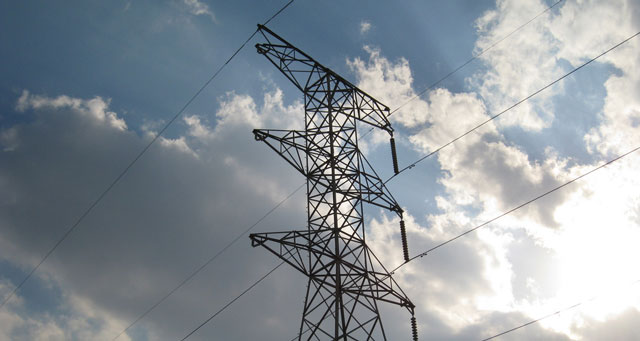
There are strong indications that Eskom’s average electricity tariffs will increase by a mere 2,2% this year.
While this sounds good from a consumer perspective, it would leave a big hole in the utility’s pocket that might necessitate an increase of more than 20% in 2018.
Such price volatility is in direct conflict with the objective of energy regulator Nersa’s multi-year price methodology, which is aimed at providing a smooth and predictable price path that would enable Eskom clients to plan ahead for their electricity costs.
The 2,2% increase stems from a decision in February 2013 to grant Eskom an 8% tariff increase annually during the following five-year tariff period, known as MYPD3. The financial year starting on 1 April 2013 and ending on 31 March 2018 is the year of MYPD3.
The 8% stuck in many minds and even national treasury in its budget circular to municipalities in December said: “In terms of the MYPD for Eskom’s tariffs approved by Nersa, a tariff increase of 8% has been approved for the 2017/2018 financial year.”
It has to be noted, however, that Nersa decides on revenue, not on percentage increases. For 2017/2018 it allowed Eskom to charge tariffs that would generate revenue of R216 billion from its customers. That translated to an average tariff of 89,13c/kWh, which was 8% more than the average tariff of 82,53c/kWh for 2016/2017.
Since then, Eskom has however submitted applications for interim increases based on the Regulating Clearing Account (RCA) methodology, which allows it to claw back prudently incurred expenses and lower-than-anticipated revenue due to factors outside of its control.
During the current MYPD period, Nersa granted Eskom two such increases, which has resulted in a higher revenue in previous years and therefore higher average tariffs. The basis upon which the percentage increase in tariffs is calculated is therefore higher. As a result, the percentage increase Eskom is entitled to this year is a mere 2,2%.
This is not enough to ensure Eskom’s sustainability, says Energy Intensive User Group spokesman Shaun Nel. “At the time the EIUG in fact stated that Eskom needed an annual increase of at least 10% to ensure its sustainability,” Nel says.
Eskom is also of the opinion that it is being shortchanged and tried to address this by submitting two further RCA applications last year: one for R19bn and the other for R23bn.
Nersa seems to agree that Eskom needs more that the R216bn the MYPD decision would grant it. When it granted Eskom an additional R11,2bn in revenue for 2016/2017 in terms of the RCA, it also instructed Eskom to submit an early multi-year tariff application, since the assumptions upon which MYPD3 was based were proven to be unrealistic. This includes among other things overly optimistic electricity sales forecasts.
Nersa later settled for the two additional RCA applications and a new RCA application by April this year.
A group of business people from the Eastern Cape however threw a spanner in the works when it successfully challenged the 2016/2017 RCA increase and had it set aside in the high court last year.

Both Eskom and Nersa are appealing the decision, which has resulted in the two outstanding RCA applications being put on ice pending the outcome of the appeal. That means that Eskom is most probably stuck with the 2,2% increase.
Asked about the dilemma, Eskom said it has followed the MYPD methodology and submitted an RCA application each for year 2 and year 3 of MYPD3, but this process “has been overtaken by a legal process”.
Eskom says Nersa is in the process of determining the tariff adjustment for 2017/2018. “In terms of the ERA (Electricity Regulation Act), Eskom can only implement tariff adjustment decisions made by Nersa. Eskom currently awaits a decision from Nersa and will implement whatever decision Nersa makes.”
By 15 March, Eskom has to table the approved increase in parliament for it to take effect on 1 April.
Nersa’s former regulator member for electricity, Thembani Bukula, spoke to EE Publishers’ Chris Yelland in October last year: “Bukula indicated that there were several other remedies at the disposal of the regulator, including condonement, to ensure Eskom’s continued financial sustainability. He further pointed out the significant savings Eskom was now achieving since stopping the outflow of about R1bn/month for diesel to power its open-cycle gas turbines in the Western Cape,” Yelland wrote.
Bukula has since left Nersa and it is unclear what the regulator plans to do.
The ERA also provides that Nersa should set tariffs that ensure Eskom’s sustainability.
As matters stand, Nersa seems to be prevented by the pending litigation from applying its methodology. Judge Cynthia Pretorius in her RCA judgment last year however discussed the conditions under which Nersa would be permitted to deviate from its prescribed methodology, which it would have to do in order to approve a tariff increase of more than 2,2% in April.
She said if Nersa decides to deviate, it should give notice to its customers of such deviation.
Nersa has not done that yet and time is running out. The regulator also failed to respond to Moneyweb’s enquiry about the issue.
By 15 March, Eskom has to table the approved increase in parliament for it to take effect on 1 April.
In the meantime, Eskom is busy preparing its tariff application for the new multi-year period starting 1 April 2018.
Nel says any deviation by Nersa from prescribed methodology in an effort to assist Eskom would most probably be challenged in court. “There is no mechanism to award anything but the 2,2% tariff increase,” he says.
“That will result in Eskom trying to play catch-up with a tariff increase of more than 20% in future years,” he says.
- This article was originally published on Moneyweb and is used here with permission




